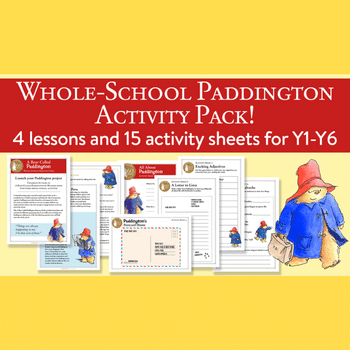Teach Grammar In 10 Minutes

Well, maybe not all of it. But quick daily sessions have helped to cement Conor Heaven’s pupils’ grasp of GaPS…

- by Conor Heaven

Back in the 90s, when I was at primary school, I struggled with writing. I loved language and how authors used it to develop wonderful characters, settings and plots – but sitting down creating my own for an hour? Not so much.
I think this led to me being treated as a lazy boy – someone who shouldn’t be made to learn grammatical terminology in case I abandoned the writing process altogether.
By the time I reached secondary school it was: “Heaven, for this next exercise, you will write a subjunctive clause.” My heart would sink (I had no idea what a clause was).
As it turned out, I could, and did, use clauses in my writing – it’s just that I hadn’t learnt what to call them. Not that my grammar school’s obsession with naming structures actually improved my grammar, or my writing.
My personal experience tells me there’s something wrong with a Govian, conveyor belt education in which identifying and naming grammatical structures takes us from birth to exam success. It had little impact on my ability to use grammar successfully – so what’s the point?
Having said that, I wouldn’t go as far as Michael Rosen either (no matter how much I adore his poetry) in rejecting grammatical terminology. After all, if four-year-old children can use dinosaur names in context, they can probably remember their fronted adverbials, as long as we teach them in a fun and engaging way.
A new way to teach grammar
So, last year, our infant school took a different approach. We had three aims: children should learn grammar, enjoy it, and be able to name its features. Measuring success would be simple. If the mere mention of grammar wasn’t accompanied by groans and children felt confident in tackling the GaPS paper, it would be job done.
We started by looking at when it would best fit in with our already hectic timetable. Some schools were teaching standalone grammar lessons once a week; we thought this would lead to superficial learning. To have a deep understanding of grammar, we agreed, concepts needed to be taught, developed, practised and embedded.
This led to us having 10-minute daily grammar sessions. What worked exceptionally well was that children could explore and play with punctuation and grammar each day before attempting to use it in their English lessons. The next day, the grammar session would be adapted to deal with misconceptions or develop the concept further.
So, where to start? We began with appealing and challenging texts. For my class, short passages from CS Lewis often gave the right balance of engaging, high-quality content. By analysing model texts, we ensured children could identify grammatical structures in context and begin to understand how and why they were used.
Create a working wall
Once we had shared our grammatical focus for the week, we would collaborate on a ‘steps to success’ working wall using the Frayer model, with a ‘definition’, ‘facts’, ‘examples’ and ‘non-examples’.
It was important to encourage children to look for more examples at home or in school and reward their discoveries. We would add these examples to our display using sticky notes.
I would model using these grammar examples in shared writing, thinking out loud about my choices and asking the children to support me. Pupils then felt more confident using these aspects of grammar in their writing and would look at the display if they felt unsure.
Help everyone succeed
From the middle of the week onwards, children would begin to offer examples of the concept we had been exploring, discovering them in model texts and in our own books too. Whiteboard work would allow children to explore and play with the focus in a risk-free, collaborative environment.
As they developed understanding and confidence, they began to experiment with new grammar in their written work. By the end of the week, most were confident in using it correctly, having spent close to two hours practising.
Of course, some children were not secure or didn’t feel confident enough to use the new grammar in their independent writing.
So, even though we would move on to a new concept, I would continue to identify previous examples when looking in model texts, modelling how to use it in shared writing. This ensured that children didn’t forget, and those with misconceptions would have corrective teaching.
In our termly assessments we found children were able to recall the names and features fairly successfully. And our (hopefully outstanding) GaPS test results? Well, that was ruined when the 2016 test was shared early with everyone. Sigh.
What works best?
Teaching key stage 1 grammar this year? Here are Conor’s top three tips…
1 | Consider a Talk for Grammar approach
Use a rich text (or WAGOLL) full of examples you want pupils to use. Children need to see and hear examples across the week. They need to play with and use talk to create their own versions. I knew my children had got it when they could sort examples and non-examples.
2 | Name it!
Use the correct terminology. If reception children can learn the names of dozens of dinosaurs then children in Year 1 and 2 can learn ‘adjective’ instead of ‘wow word’, ‘verb’ instead of ‘doing word’, and ‘conjunction’ instead of ‘sticky word’.
3 | Embed the grammar in independent writing
By this, I mean don’t teach to the test! The GaPS score will have some bearing on whether children reach the expected standard or not, but children need to confidently use these skills in their writing. Why not put the grammar ‘objective of the week’ in the success criteria?
Conor Heaven is a former teacher, now an education consultant for TT Education. Follow him on Twitter at @ConorHeaven.











